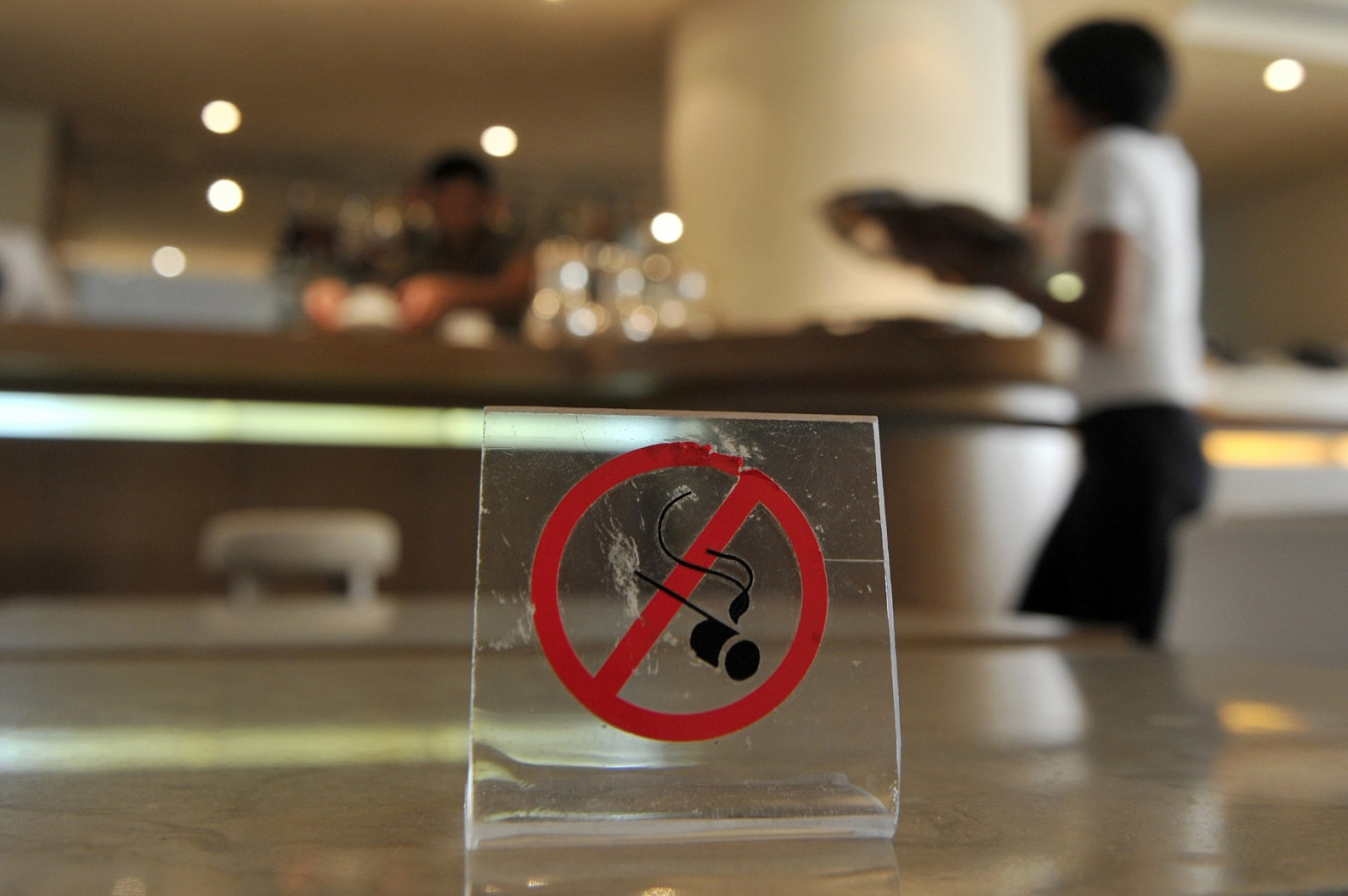Popular Reads
Top Results
Can't find what you're looking for?
View all search resultsPopular Reads
Top Results
Can't find what you're looking for?
View all search resultsMajor policy changes needed to reduce child smoking: Experts
Nearly one in ten Indonesian children smoke.
Change text size
Gift Premium Articles
to Anyone
Indonesia must tighten policies on the advertisement, sale and taxation of tobacco to reduce child smoking, experts have said.
Faisal Basri, a senior economist at the Institute for Development of Economics and Finance (Indef) and the University of Indonesia, said on Monday that the government could not rely solely on tobacco excise taxes to reduce the number of children who smoked. He said policymakers needed to remove the false sense of affordability that came from cheaper packs of cigarettes.
“In Indonesia, cigarette companies can manipulate the price [per pack] so that it appears cheap when the price per cigarette is actually more expensive,” Faisal said in a virtual discussion held by the Jakarta chapter of the Alliance of Independent Journalist (AJI Jakarta).
One cigarette maker, for example, sells a pack of 16 cigarettes for Rp 22,000 (US$1.51) – Rp 1,375 per cigarette. The company also sells a pack of 12 cigarettes for Rp 18,000, creating the illusion of savings despite the fact that the second pack has a unit price of Rp 1,500.
Faisal said Indonesia’s tobacco policy had been “too liberal” and suggested that the government ban cigarette ads in public spaces and raise the import duty on tobacco products to increase the price of cigarettes.
In 2016, 8.8 percent of Indonesian children smoked; in 2018, 9.1 percent smoked, according to data from the Health Ministry’s Basic Health Research (Riskesdas). The rise in young smokers not only severely harms the health of additional children, it also creates persistent human resources issues and health insurance burdens for the government.
The government failed to meet its target of reducing the child smoking rate to 5.4 percent last year. Based on the 2020-2024 medium-term national development plan, it now hopes to bring the rate down to 8.7 percent in 2024.
Teguh Dartanto, an economist at the University of Indonesia (UI), found that higher cigarette prices reduced the likelihood that children would smoke and lowered cigarette consumption in children who did smoke.
According to an estimate by Teguh and his colleagues, a 10 percent rise in the price of cigarettes would reduce consumption by 1.3 cigarettes a week for children aged seven to 18 years. But for senior high school students in particular, such an increase would reduce consumption by seven cigarettes a week.
“If we look at smoking intensity, children aged 16 to 18 – senior high school students – are very sensitive to price,” said Teguh in the discussion. “Increases in the price of cigarettes are key to getting child smoking prevalence under control.”
Teguh said children – especially if they were senior high school students, came from low-income families and lived in villages outside Java – were more likely to become smokers if they were friends with child smokers.
The availability of individually sold cigarettes at small kiosks poses another challenge to eradicating child smoking, according to Lisda Sundari, who leads the Lentera Anak Foundation.
“No matter how high the excise tax is, children can still buy cigarettes,” said Lisda.
Cigarette prices have been rising as a result of a government policy that will raise tobacco excise taxes by an average of 23 percent this year.
Tobacco excise taxes account for about 96 percent of the government’s total excise revenue. The government is expecting tobacco excise revenue to stagnate at Rp 164.9 trillion (US$11.38 billion) this year and begin growing again in 2021 by 4.7 percent annually.
The regulation has capped the tobacco excise tax at 57 percent of the retail price, but Faisal and Teguh agreed that the government should exceed the limit to bring about a greater reduction of smoking.
Wawan Juswanto, an analyst at the Finance Ministry’s Fiscal Policy Agency, said on Monday that the government was planning to simplify the tobacco tax.
“Right now, the excise for conventional tobacco products consists of 10 layers, and the simplification will reduce the layers. However, I cannot comment on how many layers it will be,” said Wawan in the discussion. The government expects the simplification to allow it to tax cigarette makers more effectively.
Indonesia’s tobacco industry contracted by 10.84 percent year-on-year (yoy) in the April to June period as the COVID-19 pandemic put a large part of the economy on hold. The government predicts that cigarette production will fall in 2020 by 16.3 percent yoy to 298.4 billion cigarettes.










